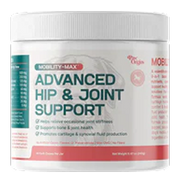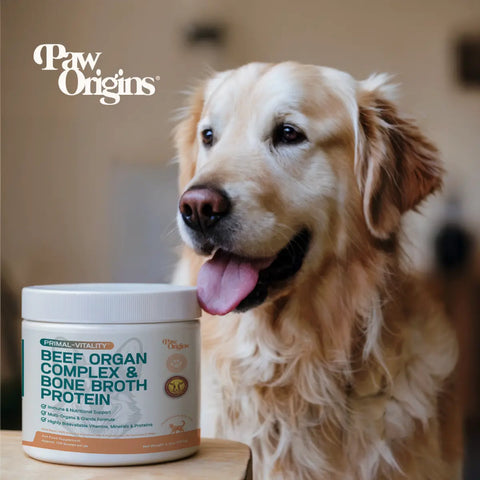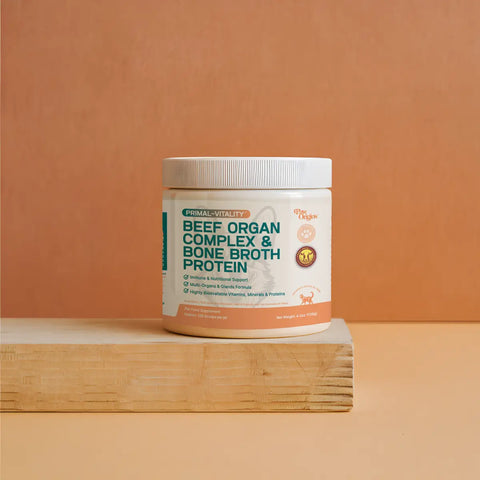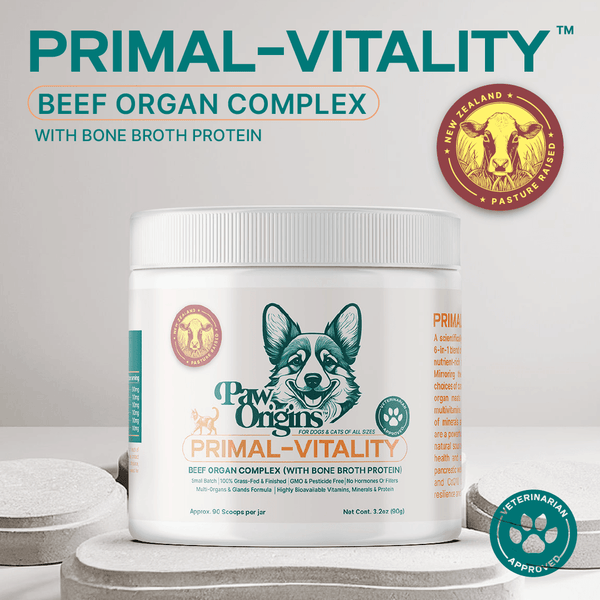What is the best wet dog food for weight control?
Frequently Asked Questions
Does Bone Broth Help Dogs with Joint Pain?
Yes, bone broth supports joint health in dogs by providing essential nutrients that promote cartilage repair and mobility. It is rich in collagen, glucosamine, and chondroitin, which help maintain joint structure and flexibility. Primal-Vitality™ Beef Organ Complex & Bone Broth Protein delivers these key nutrients in a bioavailable form, making it an effective addition to a dog's diet for long-term joint support.
Is Bone Broth Good for Dogs with Arthritis?
Yes, bone broth can be beneficial for dogs with arthritis by supporting joint structure and flexibility. It contains collagen, glucosamine, and chondroitin, which help maintain healthy cartilage and mobility. Primal-Vitality™ Beef Organ Complex & Bone Broth Protein provides these essential nutrients in a digestible form, making it a great addition to a dog’s diet for long-term joint health.
Can Bone Broth Reduce Inflammation in Dogs?
Bone broth is packed with glycine and other amino acids that support the body’s natural inflammatory response. These nutrients help nourish connective tissues and promote overall recovery. Primal-Vitality™ Beef Organ Complex & Bone Broth Protein enhances these benefits by delivering high-quality proteins and minerals, making it a valuable choice for dogs experiencing joint stiffness or digestive issues.
How Does Bone Broth Support Senior Dogs?
As dogs age, their joints, digestion, and immune systems need extra support. Bone broth provides essential building blocks like collagen and amino acids that help maintain joint mobility and gut health. It also contains nutrient-dense organ meats, offering a well-rounded supplement to help aging pets stay active and comfortable.
Can Bone Broth Improve Quality of Life for Dogs?
Yes, bone broth can play a key role in a dog’s overall well-being by supporting movement, digestion, and nutrient absorption. It provides easily digestible proteins and minerals that help maintain strength and vitality. Rich in collagen and amino acids, it also aids in muscle recovery and joint flexibility. Regular use can help dogs stay energetic and resilient through all life stages.



















 Get a free gift with purchase above $75
Get a free gift with purchase above $75



